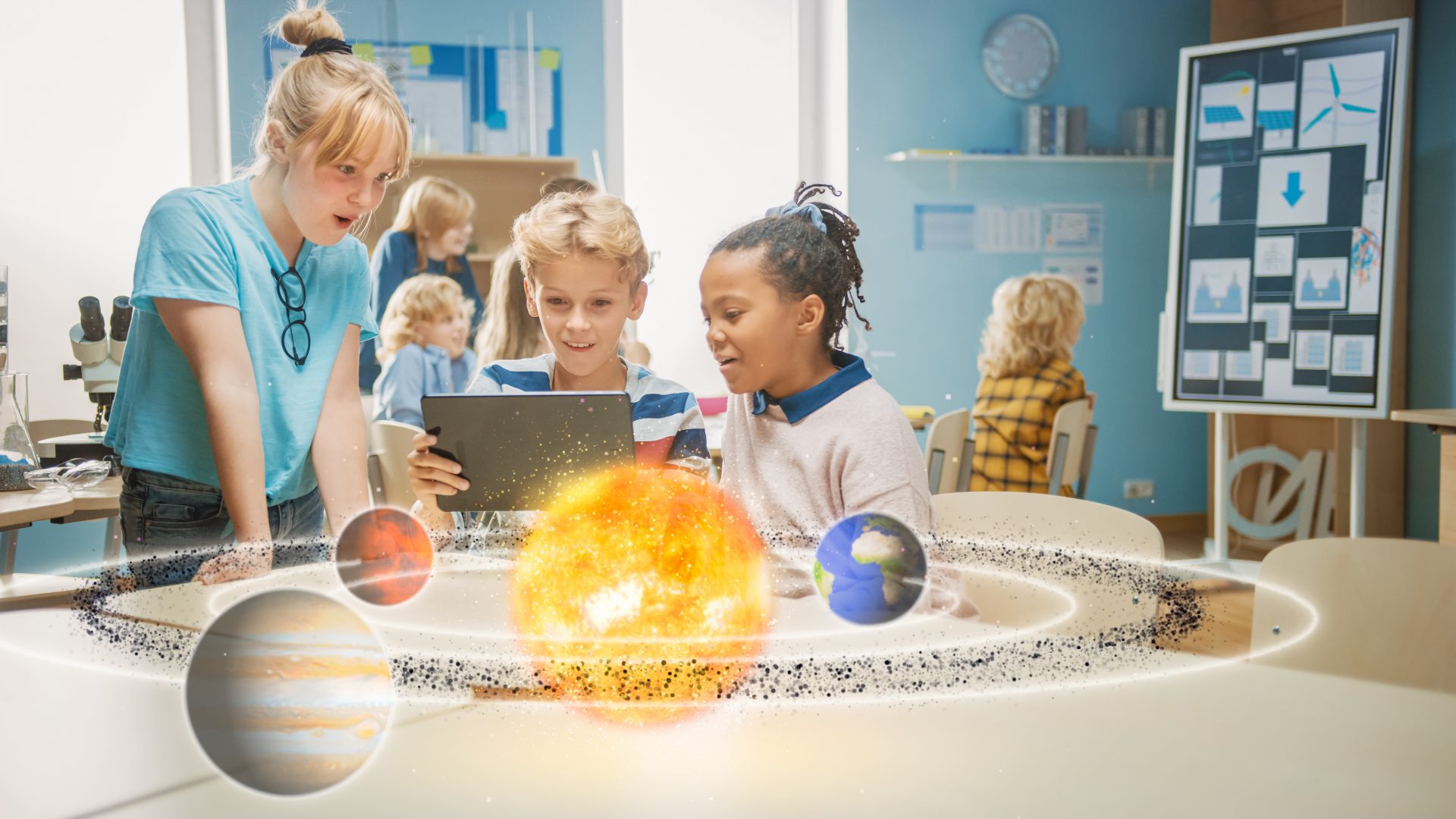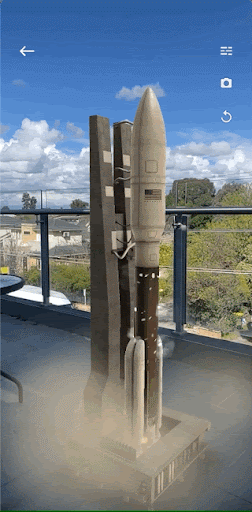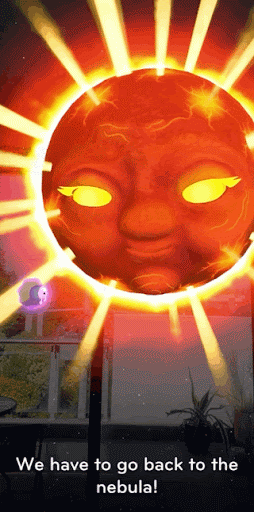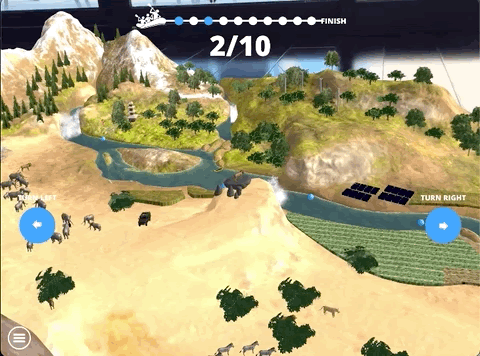Augmented Reality is a Communication Technology Superstar
AR has graduated beyond simple face lenses and is now a powerful tool for engagement and communication in educational applications.

Mission to Mars AR
A fantastic example is the AR app, Mission to Mars. Developed by the Smithsonian this full-featured app manages to cram an entire school excursion into a mobile phone application. Mission to Mars uses AR to convey detailed information in a number of clever ways.
The user can view a 3 dimensional model of Mars in their living room and understand the size difference between Earth and Mars and the scale and different orbits of Mars’s two moons.

Further AR experiences include an AR portal that you can step through and experience Mars in 360 degrees. This goes beyond a simple visual gimmick as there are numerous chapters, data points and points of view to see inside this rich immersive experience.
You can pilot an AR rover across a virtual Mars landscape to gain an understanding of the speed the rovers travel (they are really slow!) and the different kinds of physical, visual and audible data they collect. And of course the app would feel incomplete with an AR rocket launch.

The depth of the Mission to Mars AR app is quite remarkable and the amount of information conveyed is impressive. By utilising different Augmented Reality techniques such as 3D plane tracking, 360 degree portals, and spatial audio the information is delivered in a gamified way that keeps the user wanting to keep playing.
Clio's Cosmic Quest
Staying in Space we have Clio’s Cosmic Quest, an episode in the AR app, Wonderscope. Wonderscope is aimed at a younger audience and includes multiple, mostly STEM based AR adventures. In Clio’s Cosmic Quest the user is introduced to a dust particle called Clio, who aspires to become a fully-fledged Star.

Clio’s Quest combines plane-tracked AR and 360 degree AR portals to immerse the user. A clever use of speech recognition requires the user to ‘speak’ to Clio, keeping them engaged with the story. Simple gamified elements such as ‘Tap to find the particles’ and ‘Tap to go Faster’ give the user a sense of completion when they finish the 15 minute experience. Through clever storytelling we follow her journey and learn how stars are formed.

WWF Free Rivers
This app is a simple but very effective use of Tabletop AR, animation and interactivity to educate the user on how river ecosystems work. The app uses robust plane tracking so the user is able to move in and out, allowing them to explore the details in the AR world.

Along with excellent animation and storytelling, Free Rivers employs a couple of clever game mechanics. The user is encouraged to ‘explore’ the world and ‘collect’ different characters to learn their individual stories of living and working alongside a river system. As the user finishes the story they are rewarded with a mini-game that allows them to navigate a kayak down the now healthy river.

Communication Technology Super-tools
Augmented Reality offers a unique toolset to engage and immerse users while effectively breaking down complex topics into interactive, entertaining experiences.
These tools include
- Interactivity/Gamification- Tactile interaction with the topic allows for broader and deeper learning
- Perspective- By projecting realistic sized AR objects into the real world the user has immediate access to spatial information not possible with 2D media.
- Voice recognition- Accurate voice recognition opens up gamification and educational possibilities
- Immersion- Using 360 degree portals transport the user to a different environment, focusing their attention in an immersive environment.
Want to use these communication technology tools to create amazing educational AR content?
Find out more visit; catalystvr.com.au/services/augmented-reality/